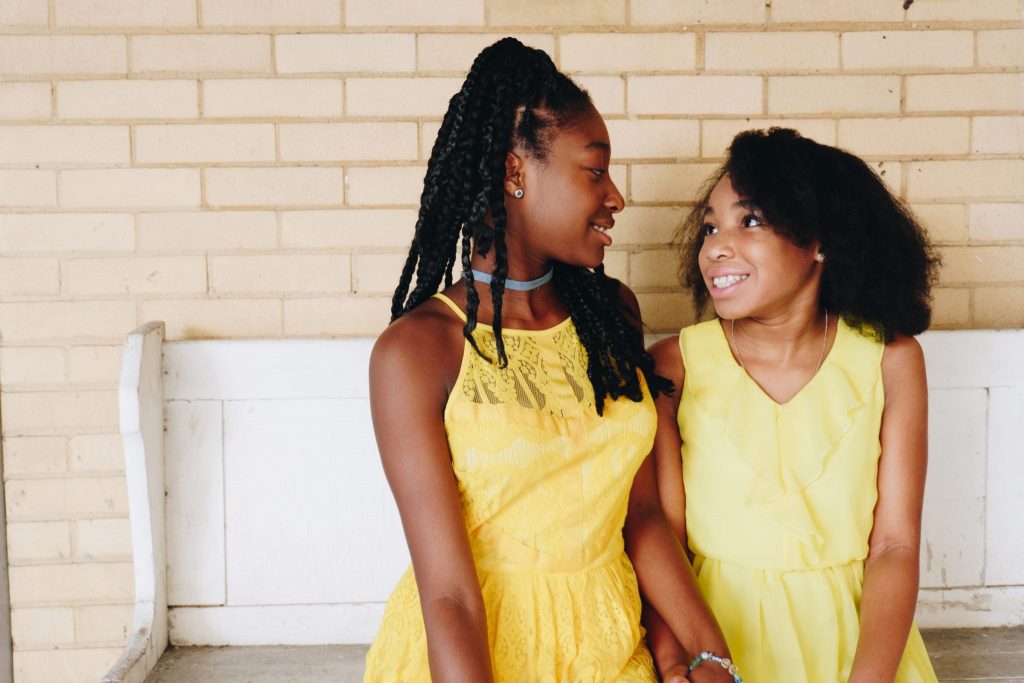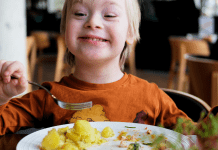 Empathy may seem like a challenging concept for a child to grasp, especially for younger children. But there are simple yet intentional ways that you can teach your child the concept of empathy through their relationships with their siblings.
Empathy may seem like a challenging concept for a child to grasp, especially for younger children. But there are simple yet intentional ways that you can teach your child the concept of empathy through their relationships with their siblings.
Growing up, my relationship with my two sisters was filled with the typical antics that come with sibling relationships. I have a sister who is almost two years younger than me and a sister who is eight years younger than me. Boy, did we have our moments where we hated each other’s guts! It is funny reminiscing with them on our antics and seeing how much our relationships have changed now that we are all adults.
The Sibling Antics Begins
When our first daughter was born, it wasn’t in our plans to have another, but 10 years later, we were blessed with our second. We noticed that the first few years after our youngest was born, the girls were two peas in a pod. My oldest took on her role of “big sister” naturally and without any real prompting from my husband or me. I quickly attributed this to the significant age gap between the two. They were so far apart in age, there was no need for the typical “sibling rivalry” to occur. I was wrong. The sibling antics began shortly after our youngest turned four and began asserting her independence through her words and her actions, and my oldest turned 13 and began doing the same. Double whammy. I wasn’t ready y’all.
3 Ways To Teach Empathy Among Siblings
From experience, I knew that just saying “Girls, get along…you’re sisters!” over and over again wasn’t going to cut it. I needed them to both understand that their ability to get along went way beyond their sibling relationship. They needed to learn about empathy and practice that empathy with each other at home so that they could replicate that empathy with their friends and others.
So I pulled a few tools from my positive parenting toolbox and came up with three simple ways to teach them empathy. These will need to be adjusted for your child’s age and stage.
- Encourage your children to talk about and name their feelings: Children are not always able to articulate their feelings in a healthy manner, which can lead to much frustration which comes out in their behavior in a negative way. The ability to talk about and name their feelings helps to address some of that frustration. My four-year-old LOVES books, so I find using books as a tool to demonstrate a challenging concept I want her to learn is helpful. The Rabbit Listened by Cori Doerrfeld is one of my four-year-old’s favorite books to read and it explains the concept of empathy in a beautiful way that she can understand.
For my teenager, I use real-life situations happening with her and her friends OR journaling as a way to talk about her feelings and help her to process them. Just Us Girls: A Shared Journal for Moms and Daughters by Brandi Riley is a journal we have been using since last year. When the pandemic hit and we were all in lock down, I used this journal as a mental health check-in for both of us. I also encouraged her to keep a journal of her own that was just for her as a way to get out feelings that she couldn’t express out loud.
2. Point out when they are showing (or not showing) empathy towards their sibling(s): You’re probably already doing this in some shape or form. But after a sibling disagreement or when you catch your children behaving agreeably towards each other, take a moment to point out whether empathy was being shown or not shown in the situation. Highlighting the differences in real time is important. This also highlights an opportunity to help your children identify how to give and receive empathy. They will be able to learn how to go beyond an apology or “feeling bad” and move from empathy to action.
3. Help them to model (practice) empathy through role playing: Role playing allows children to act out and make sense of real-life situations. This works well for preschool and younger elementary aged kids. For older children, talking through a situation where they can model empathy as a better and more welcome alternative. Siblings can take turns playing the roles of the person who needs empathy is shown to them and the person who is showing empathy. This gives them the opportunity to experience different perspectives in a healthy manner.

Cultivating A Culture Of Empathy
As parents, one of our goals should be to help our children to become contributing members of society who help and not harm. Creating a culture of empathy in your home is a simple but vital way to ensure that goal is reached. They are able to demonstrate what they have learned when they step outside the doors of your home. And as they grow older and experience more of the harsher realities of life, where empathy may be hard to find. They have a foundation of receiving and giving empathy through their sibling relationships to fall back on.
The lesson of empathy will be one that you will need to repeat over and over again. As they move up in age and are presented with different life situations, you will need to shift the way you present the lesson in a new way. But at the end of the day, the art of empathy is a lifelong lesson of growth that we all need to model day in and day out.













